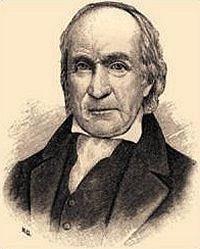Planning worship?
Check out our sister site, ZeteoSearch.org,
for 20+ additional resources related to your search.
- |
User Links
Search Results
That glorious day is drawing nigh
Appears in 104 hymnals Used With Tune: BELMONT
That glorious day is drawing nigh
ZION'S LIGHT
Meter: 8.6.8.6 D Appears in 16 hymnals Composer and/or Arranger: Nicholson Tune Sources: A Compilation of Genuine Church Music, fourth edition, by Joseph Funk, 1847 Tune Key: E Major Incipit: 13332 35535 65321 Used With Text: That Glorious Day Is Drawing Nigh
ZION'S LIGHT
That Glorious Day Is Drawing Nigh
Hymnal: The Cyber Hymnal #6560 Meter: 8.6.8.6 D Lyrics: 1. That glorious day is drawing nigh,
When Zion’s light shall come;
She shall arise and shine on high,
Bright as the morning sun;
The north and south their sons resign,
And earth’s foundations bend;
Clothed as a bride, Jerusalem
All glorious shall descend.
2. The king who wears the splendid crown,
The azure’s flaming bow;
The holy city shall bring down,
To bless His church below;
When Zion’s bleeding, conqu’ring king,
Shall sin and death destroy,
The morning stars shall join to sing,
And Zion shout for joy. Languages: English Tune Title: ZION'S LIGHT
That Glorious Day Is Drawing Nigh
That glorious day is drawing nigh
Author: John Leland Hymnal: The Camp Meeting Hymn Book #16 (1831) First Line: The glorious day is drawing nigh
That glorious day is drawing nigh
That glorious day is drawing nigh
Author: John Leland Hymnal: The Child's Pocket Companion, Being a Selection of Choice Hymns for Sabbath School, with an Analysis to Most of Them #d55 (1831) First Line: The glorious day is drawing nigh
That glorious day is drawing nigh
Anonymous
Person Name: Unknown Author of "That glorious day is drawing nigh" in The Standard Church Hymnal In some hymnals, the editors noted that a hymn's author is unknown to them, and so this artificial "person" entry is used to reflect that fact. Obviously, the hymns attributed to "Author Unknown" "Unknown" or "Anonymous" could have been written by many people over a span of many centuries.
Anonymous
John Leland

1754 - 1841 Author (attributed to) of "Millennium" Leland, John, an American Baptist minister, was born at Grafton, Massachusetts, on May 15th, 1754, and began to preach at the age of 20. From 1776 to 1790 he was in Virginia, and thereafter in Massachusetts, mostly at Cheshire. He died Jan. 14, 1841. His Sermons, Addresses, Essays and Autobiography were published by his niece, Miss L. F. Greene, at Lanesboro, Massachusetts, in 1845. His influence seems to have been equalled by his peculiarities. We hear of his "restless activity and roving disposition"; his "mad devotion to politics," wherein he had much local and temporary weight; his "ready wit and endless eccentricities;" as also of his high character. Of the hymns which have been ascribed to him, some on doubtful authority, the following are the most important:—
1. The day is past and gone, The evening, &c. Evening. This is in universal American use, and Leland's claim to the authorship has never been disputed, although it is supported by no known particulars. It was first made widely known by the invaluable Hartford Selection (Congregational) of 1799. Its first appearance, so far as known, was in Philomela, or, A Selection of Spiritual Songs, by George Roberts, Petersburg,1792, No. 82.
2. 0 when shall I see Jesus! The Christian Race. This vigorous lyric is ascribed by Dr. Hitchcock, in Hymns and Songs of Praise, 1874, to Leland. It has generally been regarded as anonymous, and is of uncertain date, cir. 1807, or probably earlier.
3. Christians, if your hearts are warm. Holy Baptism. Adult. The only hymn by Leland which can be authenticated by date and circumstances is this familiar doggerel:— "Christians, if your hearts are warm, Ice and snow can do no harm."
Dr. Belcher says, in his Historical Sketches of Hymns, &c, 1859, that it was written for one of Leland's large baptisms in Virginia, 1779.
[Rev. Frank M. Bird, M.A.]
-- John Julian, Dictionary of Hymnology (1907)
John Leland
Thomas Clark
1775 - 1859 Person Name: T. Clark Composer of "CANTERBURY" in The Standard Church Hymnal
Baptized: February 5, 1775, Canterbury, Kent, England.
Died: May 30, 1859, at his home in St. George’s Street, Canterbury, Kent, England.
A cobbler and choir trainer, Clark led the singing of the Psalms at the Wesleyan Chapel, Canterbury, and later at the Unitarian Church in Canterbury. It has been claimed he never actually joined the Unitarians, though he sympathized with them, and he resigned from the Methodists. Clark wrote a number of anthems, including "Awake Up, My Glory", "Daughter of Zion" and "Since I Have Placed My Trust." His other works include:
First Sett of Psalm and Hymn Tunes, 1805
Second Sett of Psalm and Hymn Tunes, circa 1810
Congregational Harmonist, 4 volumes (1828 to circa 1835)
The Sacred Gleaner, 1830
The Union Tune-Book, 1837 (co-editor)
Union Harmonist, 1841
Harmonized the second edition of the Union Tune Book for the Sunday School Union, 1842
The Juvenile Harmonist, 1842
David’s Harp—A Series of Original Tunes Composed Expressly to the Psalter, 1843
The Seraphim or Sacred Harmonist, 1843
British Psalmody, with Alexander Hume (Edinburgh, Scotland: 1844)
--www.hymntime.com/tch/
Thomas Clark


 My Starred Hymns
My Starred Hymns

